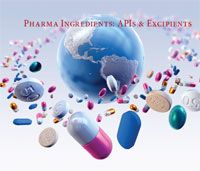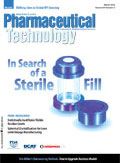Navigating the Global Pharmaceutical Supply Chain
Emerging markets remain an important element in the strategies of pharmaceutical companies and their suppliers.
As the major pharmaceutical companies target emerging markets in their growth strategies, a crucial question is how the supplier base in those markets will evolve. Suppliers in countries such as India and China have long been a source of raw materials and early-stage intermediates to the pharmaceutical industry, and suppliers in India have been a source of advanced intermediates and active pharmaceutical ingredients (APIs) to the generic-drug industry. Suppliers from emerging markets, particularly India and China, historically have been regarded as a source for lower-cost production for pharmaceutical ingredients exported to North America and Western Europe.

(PHOTO: DIETER SPANNKNEBEL, DIGITAL VISIION, GETTY IMAGES)
As the pharmaceutical majors target emerging markets, however, an important consideration is how the players—Big Pharma through its own captive production, domestic suppliers in emerging markets, and Western suppliers—will participate in the emerging-market growth plans of Big Pharma. This participation can evolve around Big Pharma's positioning in emerging markets for established and new products, research and development (R&D) activities for new product development as well the historical role of emerging market suppliers in offering low-cost production for exported products. As with any customer–supplier relationship, the extent to which suppliers move further up the value chain in serving innovator-drug companies market will be dictated by issues of cost, quality, and security of supply.
Market numbers and strategies
Despite economic conditions affecting some emerging markets, projected growth in the BRIC countries (Brazil, Russia, India, and China), Turkey, South Korea, and Mexico is strong as these markets are expected in aggregate to increase by 12–14% in 2010, and 13–16% through 2013, according to IMS Health. China's pharmaceutical market, alone, is expected to increase in excess of 20% per year and contribute 21% of overall global pharmaceutical growth in 2013 (1).
Although the United States is projected to remain the largest consumer of APIs (both innovator and generic) with a projected 36.6% share in 2013, China will become the largest consumer of generic APIs with a projected 26% share of the global merchant market for generic APIs followed by the US with a 20.5% share, according to a recent analysis by the Chemical Pharmaceutical Association (CPA), a Milan-based association representing Italian producers of intermediates and APIs for generic drugs (1).
Responding to these dynamics, several pharmaceutical companies have reorganized operationally to support their growth strategies' in emerging markets and emphasized their financial performance in these markets in recent investor presentations. Additionally, select companies are increasing investment, including for R&D, and have developed supply arrangements for established products in emerging markets.
The moves
Following its $68-billion acquisition of Wyeth (Madison, NJ) last year, Pfizer (New York) established an emerging-market business unit as one of five business units in its biopharmaceutical business, which also includes a business unit for established products. As part of its strategy for emerging markets and established products, in May 2009, Pfizer partnered with two Indian pharmaceutical manufacturers: Aurobindo Pharma (Hyderabad, Andra Pradesh) and Claris Lifesciences (Ahmedabad, Gujarat). Under the deal with Aurobindo, Pfizer acquired the rights to 55 solid oral-dose products and five sterile injectables in 70 emerging markets and will commercialize those products. Pfizer also acquired the rights to 15 generic injectables from Claris Lifesciences.
In January 2010, Pfizer formed a collaboration with the contract manufacturer Strides Arcolab (Bangalore, Karnataka, India) under which Pfizer will commercialize off-patent sterile injectable and oral products in the US. The finished dosage-form products will be licensed and supplied by Strides, Onco Laboratories and Onco Therapies, two joint ventures between Strides and the generic pharmaceutical company Aspen PharmaCare (Johannesburg, South Africa).

Formulation development forum: electroporation delivery for DNA vaccines
For new drug development, in November 2009, Pfizer (China) Research and Development Co. (Wuhan, China) and Wuhan National Bioindustry Base Construction and Management Office signed a memorandum of understanding to establish a Pfizer R&D center in China. The new center, to be located in Biolake, expands the company's position in China, which includes an existing Pfizer R&D center in Shanghai. Pfizer's R&D operations in Wuhan will support clinical drug development (Phase I–IV). Once the facility is built, Pfizer expects to staff the facility with 300 employees within three years and plans to collaborate with local research institutes and universities.
Following its $41-billion acquisition of Schering-Plough (Kenilworth, NJ) in 2009, Merck & Co. (Whitehouse Station, NJ) formed a new emerging markets group as part of its newly formed global human health organization. The group is focusing on growth opportunities in China, Asia-Pacific, Latin America, and Middle East/Africa/Eastern Europe, including Russia and Turkey.
Presenting GlaxoSmithKline's (GSK, London) 2009 performance on Feb. 4, 2010, GSK CEO Andrew Witty reported that the company's sales in human pharmaceuticals and consumer healthcare products in emerging market grew 16% and represented 21% of the group's turnover, which was £28.4 billion ($44.2) billion in 2009.
In June 2009, GSK partnered with Dr. Reddy's Laboratories (Hyderabad), one of India's largest pharmaceutical companies, under which Dr. Reddy is manufacturing and supplying drugs to GSK, which will license and comarket the drugs in various countries in Africa, the Middle East, Asia-Pacific, and Latin America. The pact applies to more than 100 products in Dr. Reddy's existing portfolio and pipeline.
In December 2009, GSK extended its strategic relationship and acquired a 19% stake in the South African pharmaceutical company Aspen PharmaCare. GSK initially formed a collaboration in 2008 with Aspen and its joint venture partner, Strides Arcolab, on a licensing and supply basis for a portfolio of branded pharmaceutical products in emerging markets.
AstraZeneca (London) reported in February 2010 that its sales in emerging markets represented 13% of its 2009 healthcare revenues of $32.8 billion and emphasized that growth in these markets is a strategic priority. The company offered data from IMS Health that ranked the company third among the large pharmaceutical companies in growth in Asia-Pacific at 12.0%, first in Latin America at 18.8%, and third in Central and Eastern Europe/Middle East, and Africa (CEE/MEA) at 9.7%. The growth applies from the first quarter 2009 to year-to-date at the time of the presentation (early February 2010). AstraZeneca outperformed overall pharmaceutical growth in Latin America for this period, which was 11.3%, and was only slighly below growth rates in Asia Pacific, which grew at 13.2%, and in CEE/MEA, which increased at 10.2%
Christopher Viehbacher, CEO of sanofi-aventis (Paris) said in February 2010 that the company's net sales in emering markets rose by 19.0% to EUR 7.36 billion ($10.0 billion), accounting for 25.1% of the company's consolidated net sales in 2009. Net sales in China grew by 28.8% to EUR 512 million ($697 million), and sales in Russia increased nearly 60% to EUR 508 million ($692 million).
Novartis (Basel, Switzerland) announced in November 2009 that it will invest $1 billion to increase the company's R&D activities in China, which includes a significant expansion of the Novartis Institute of Biomedical Research (CNIBR) in Shanghai, which focuses on basic R&D of new drugs in China. With the investment, CNIBR will become Novartis's third largest R&D center after the company's R&D facilities in Cambridge, Massachusetts, and Basel. Novartis plans to increase the number of R&D associate positions at CNIBR from a current level of 160 to roughly 1000. Novartis is also investing $250 million for a new global technical center in Changsu, Jiangsu Province, China, which will focus on technical R&D and manufacturing-related activities for APIs.
The suppliers
In addition to partnering with domestic suppliers, established Western contract manufacturers are expanding in emerging markets. A case in point is Lonza (Basel), the large contract manufacturer of small-molecules and biological APIs. The company started up new facilities for custom manufacturing for chemical APIs in Nansha, Yunnan Province, China, in 2009. The company also started laboratory-scale peptide production in Nansha, with additional capacities under evaluation.
Reference
1. P. Van Arnum, Pharm. Technol.34 (1), 46–49 (2010).

PacBio Chosen as Tech Partner for Global Alzheimer’s Disease Research Project
April 23rd 2025The project, the North African Dementia Registry, will unite multiple entities for the purpose of developing a comprehensive dataset to advance the research community’s understanding of Alzheimer’s disease and other dementias in diverse populations.
Drug Solutions Podcast: A Closer Look at mRNA in Oncology and Vaccines
April 30th 2024In this episode fo the Drug Solutions Podcast, etherna’s vice-president of Technology and Innovation, Stefaan De Koker, discusses the merits and challenges of using mRNA as the foundation for therapeutics in oncology as well as for vaccines.
Pharmaceutical Tariffs Are Imminent: How Industry is Bracing for Impact
April 16th 2025On April 14, 2025, the Trump Administration launched a national security-driven investigation into pharmaceuticals, a move that will likely result in tariffs being placed on pharmaceutical drugs, ingredients, and other components that are imported from outside of the United States.
PacBio Chosen as Tech Partner for Global Alzheimer’s Disease Research Project
April 23rd 2025The project, the North African Dementia Registry, will unite multiple entities for the purpose of developing a comprehensive dataset to advance the research community’s understanding of Alzheimer’s disease and other dementias in diverse populations.
Drug Solutions Podcast: A Closer Look at mRNA in Oncology and Vaccines
April 30th 2024In this episode fo the Drug Solutions Podcast, etherna’s vice-president of Technology and Innovation, Stefaan De Koker, discusses the merits and challenges of using mRNA as the foundation for therapeutics in oncology as well as for vaccines.
Pharmaceutical Tariffs Are Imminent: How Industry is Bracing for Impact
April 16th 2025On April 14, 2025, the Trump Administration launched a national security-driven investigation into pharmaceuticals, a move that will likely result in tariffs being placed on pharmaceutical drugs, ingredients, and other components that are imported from outside of the United States.
2 Commerce Drive
Cranbury, NJ 08512
All rights reserved.